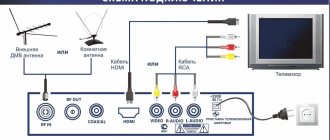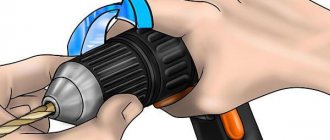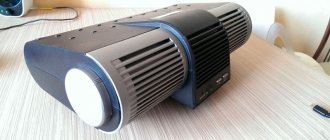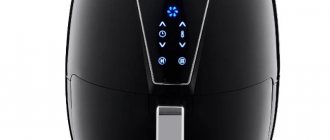If you have to cultivate large areas of soil, it is not always convenient to do this with a shovel or other hand tools. In this case, it is better to use a cultivator, the choice of which depends on several factors and conditions.
First, it’s worth defining the concept of “cultivator”. This is a specialized gardening equipment, the main purpose of which is the treatment (cultivation) of the upper sections of the soil by loosening it. Here there is often confusion regarding the question of what is a cultivator and what is a walk-behind tractor, another popular type of equipment. A walk-behind tractor is a heavy multifunctional agricultural equipment, weighing from 70 kg, equipped with an internal combustion engine and capable of performing a full range of agricultural work: cultivation, hilling, plowing, potato harvesting. When purchasing additional attachments, walk-behind tractors are also capable of removing snow, mowing grass, watering the garden, transporting goods using trailers, and so on. That is, a walk-behind tractor can be a cultivator, but not vice versa.
The advantage of a cultivator compared to walk-behind tractors is maneuverability, lightness (light weight) and fuel economy. In a garden or vegetable garden, this technique is indispensable for digging, loosening and weeding: it has proven itself well when cultivating the soil of greenhouses, flower beds, the ground between trees and rows of vegetables, under bushes.
Cultivator device
A standard cultivator consists of a frame on which the engine, transmission, working shaft with working tools, control handles, one or two transport wheels, and a protective visor are mounted.
The main working tool when working with cultivators are tillers. For most cultivator models, they are made as connections of two, four or six fairly easily removable sections. By selecting their number, they create the processing width required at this stage of work. The rotation of the cultivator cutters leads to cutting the soil into layers, crushing them and mixing them. In this case, the cultivator does not have drive wheels; it moves forward with the help of cutters, which also move, “push” it forward and cause movement.
In addition to the standard tillers described above, cultivators can, if desired, be equipped with a variety of attachments, which significantly expand the possibilities of performing agricultural work on them. Of course, such an additional “attachment” is purchased separately by the owners of the cultivators, so when choosing a cultivator for purchase, it will be useful to compare not only their technical parameters, but also the range of their equipment, their compatibility with various attachment options.
What types of cultivators are there?
When deciding to purchase a garden cultivator, you need to answer the question of what we will use it for. Since there are many types of cultivators on the market, you should carefully read the manufacturers' offers before deciding to purchase a specific model.
Hand cultivator
If you need to cultivate soil in a hard-to-reach area or if you don't have a very large garden, a hand cultivator is ideal. It comes in two types. The first is a small, convenient garden cultivator that works in an inclined position. However, if we intend to use it for a little longer, the same device equipped with a telescopic handle will work better. You will work without bending or straining your back and knees. Thanks to their small size, both devices are easy to store.
Cultivator with engine
This is a type of garden cultivator with a motor, thanks to which the device moves along the ground with almost no effort from us. It makes gardening easier and more efficient. This type of cultivator is larger and allows you to cover a larger surface area at one time.
Tractor cultivator
This type of cultivator is professional. It is equipped with spring teeth and a roller roller. The teeth have different sizes depending on the purpose of the device that is used. For effective operation of such a cultivator, it is necessary to connect a tractor, the power of which depends, first of all, on the size of the device. The device is suitable for deep loosening, crushing and mixing of soil. This is useful for effective weed control and when working in stubble.
engine's type
Engines can be gasoline, diesel, electric. Gasoline engines, in turn, can be two-stroke or four-stroke. Electric motors can be powered either from the mains, that is, they must be constantly connected to an outlet using an electrical cable of the required length, or from a built-in battery.
Electric engines and two-stroke gasoline engines are usually used in light class cultivators. Four-stroke gasoline and diesel engines are installed on medium and heavy class cultivators. The difficulty of operating cultivators with a gasoline engine is the need for constant maintenance. Fuel should be added regularly and oil should be used to lubricate parts. In addition, each model requires certain brands of oil and fuel, so you must strictly follow the instructions. Compared to electric models, gasoline models make too much noise. It is worth remembering about gasoline exhausts, harmful plants, soil and people. Models with a two-stroke engine are cheaper and simpler, but they require more fuel.
Electric cultivators do not have as much power as models with an internal combustion engine, but are great for small areas. Also, according to the observations of some users of electric models, vibration can irritate bees if work is done near the apiary.
Petrol cultivator Crosser CR-K12
Diesel cultivator ZIGZAG DT 902
Electric cultivator FERMER F-105
Engine power and transmission type
Power is expressed in horsepower, and depending on their quantity, such devices are divided into three types: light (up to 4 hp), medium (4-6 hp) and heavy (more than 6 hp) devices. Typically, the power of a cultivator is directly related to weight. The greater the power of the device, the easier and faster it cultivates the land. Engine displacement – for models with a gasoline unit. The “golden mean” rule applies here. A very weak engine with a small displacement will not be able to cope with an average load. A large and powerful engine will consume a lot of fuel. The amount of fuel consumption ranges from 1-2.5 liters per hour of intensive work.
The transmission transmits rotation from the engine to the working tools - cultivator cutters. The transmission also includes a clutch. This is a device that allows you to turn on and off rotation from the engine to the working body. The following types of transmissions are used in cultivators: gear-worm transmissions, belt-tooth-chain transmissions and some others.
Lightweight cultivator Krones GHA35
Medium-power cultivator MTD T/245
Heavy cultivator Skiper SK 700
How to choose a cultivator
Equipment for processing land plots differs in design, functionality and technical characteristics. There are many different models available at different prices. Knowing the basic parameters of choice, it is easier to find a cultivator that will cope with the tasks.
Power
Ultra-light cultivator
This parameter depends on the weight of the equipment:
- ultra-light, weighing up to 20 kg and power no more than 3 hp. These models are used in small areas. They are convenient to work in greenhouses, flower beds, and flower beds. Ultra-light equipment is maneuverable, so it is suitable for processing hard-to-reach places;
- lightweight, weighing up to 40 kg and power up to 4.5 hp. They also treat small areas, loosen to great depths, hill up, and cut furrows for future plants;
- medium, weighing from 45 to 60 kg and power ranging from 4 to 6 hp. Due to their high power, they can be equipped with attachments: a small plow, a harrow, a hiller;
- heavy, with a mass of more than 60 kg and a power of more than 6 hp. Heavy models have a gearbox, and a large selection of canopies expands the functionality, making the equipment universal. Such machines are used to process large areas: plowing, loosening, transporting loads and much more.
The larger the plot of land, the more powerful the gardening equipment should be.
Plowing width and depth
Cutter
The width and depth of cultivation depends on the power and weight of agricultural machinery. The larger the grip, the faster the land is processed, but at the same time maneuverability decreases:
- for small areas, a working width of 35 cm is sufficient;
- for a large area (from 15 acres to 1 hectare) - from 70 to 105 cm;
- lightweight models are suitable for cultivating soil in small beds;
- a plowing depth of 15–20 cm is enough to loosen and hill up hard soil;
- heavy-duty models with a loosening depth of 30–35 cm are used for work on virgin soils and areas with weeds.
Powerful cultivators are equipped with different cutters, which determine the working width.
Number of speeds
To select speeds, the vehicle must have a gearbox. Models with 2 – 3 forward speeds are used on large flat areas with soft soil, increasing the productivity of work, for example, plowing.
Transmissions with 4-6 speeds make it easier to operate attachments. In addition to forward gears, heavy petrol cultivators are equipped with reverse gears.
Models with reverse gear are more maneuverable and easy to turn and turn around. Electric cultivators do not have a choice of speed.
Maximum width and depth of cultivation
Tilling width is the maximum strip width that the cultivator can cover. A very narrow coverage adds time that is required for high-quality soil cultivation. The width of the processed strip depends on the engine power. Approximately 1 hp required for twenty centimeters of land covered in width. A wide grip is more convenient for processing large areas of land. If weeding between beds is important, then a narrow grip is more convenient.
The tillage depth reflects the distance to which the cultivator cutters penetrate the soil. As a rule, it is directly proportional to the diameter of the cutters. In some cases, the manufacturer separately indicates the cutting depth and cutter diameter. The average value usually does not exceed 25 cm. The tillage depth is set by the adjustable position of the coulter (a strong metal strip that is vertically fixed to the rear of the cultivator). The cutting width is usually adjusted by installing various cutters.
Cultivator with a maximum cultivation width of 1050 mm ZIGZAG GT 903
Cultivator with a maximum cultivation depth of 350 mm Workmaster WT-85
In order to know how to choose a cultivator for your garden, you need to consider the following points:
Power.
The greater the power, the faster and deeper the soil will be processed. In addition, it can capture a wider band, thus it will work faster and reduce our time.
Quality of knives.
In fact, this is the “main shovel”, the main tool with which the soil is processed. Therefore, knives must be made of high quality steel. Then they will last longer and the quality of work, of course, will be a level higher.
Weight.
This indicator is directly proportional to power. The more weight, the more power.
Reliability.
Visually, it is almost impossible to say anything about this factor. Therefore, you need to ask the owners of this or that model, and they will be happy to tell you all the pros and cons of this unit.
Types of cutters and their speed
The main tool when working with cultivators are tillers. For most cultivator models, they are made as connections of two, four or six fairly easily removable sections. By selecting their number, they create the processing width required at this stage of work. Of course, when work is to be done on heavy, clayey soils, the number of installed sections of soil cutters will need to be reduced. Moreover, it will be important to do this in cases where a cultivator will have to plow up virgin soil or restore agricultural cultivation of a long-abandoned site.
Milling cutters can be either non-separable or collapsible. It is better to choose collapsible knives, since they can be easily replaced if necessary. There are two types of cutter design: “crow’s feet” and with saber-shaped knives.
The last option is the most popular and can be called standard. After all, these types of products are time-tested: their effectiveness is quite high. They have the optimal shape and material. The knives are made from high-quality, high-strength steel.
As for crow's feet products, such products are used for hard soils. They have a solid structure, non-dismountable, due to this their strength is high. Such products are effective in controlling weeds and processing virgin soil. It should be noted that the cutter is a self-sharpening tool. No additional manipulations in this direction are required.
The optimal cutter speed for cultivators is considered to be 150-170 rpm. At this speed of rotation of the cutter, deep cultivation can be done to a depth of up to 15 centimeters. At 200-220 rpm, you can loosen the top layer of soil to a depth of 8-10 centimeters and do pre-sowing cultivation to a depth of 6 centimeters. And increasing the speed to 275-330 ensures effective loosening of row spacing and destruction of the soil crust.
Cultivator with saber blades SunGarden T/35
Cultivator with houndstooth cutters Zigzag GT 134
Cultivator.
A cultivator is an agricultural equipment (device, unit, machine) for cultivating soil.
With the help of cultivators, the following work is carried out: loosening the soil, moisture conservation, weed control, hilling.
Unlike a plow, a cultivator performs loosening without turning over the soil layer.
History of cultivators.
At the beginning of the 18th century, the Englishman Jethro Tull, who devoted his life to agriculture thanks to the estate inherited from his father, became seriously interested in the issue of increasing the productivity of the peasant.
Jethro Tull invented a seeder that planted seeds economically and in even rows. Until that time, seeds were simply scattered by hand.
Jethro Tull was one of the first to introduce scientific knowledge into agriculture, he published his work entitled "The New Agriculture by Horse Power or an Essay on the Principles of Cultivation and Vegetation." The work was subjected to severe criticism from contemporaries, but much of it was subsequently successfully applied and formed the basis of British agriculture.
In 1856, George Esterly, Wisconsin, USA, patented a harrow pulled by two horses, a grain harvesting “machine” and some other agricultural implements.
In 1880, the first tiller rider was created, again powered by horses.
At the beginning of the 20th century, two-row cultivators appeared.
In 1912, Australian AC Howard invented the rotary cultivator with rotating cutters. This rotary cultivator began to be used as a tractor attachment, and this was done by BF Avery in 1918.
In 1925, the American company International Harvester invented a cultivator, which became an integral part of the tractor; the cultivator's cutters could only be raised and lowered manually. But progress did not stand still, and in 1937 the first cultivators with a drive for lifting cutters were invented.
Modern cultivators.
Today, cultivators are a large family of diverse agricultural equipment for tillage. Manufacturers still continue to develop cultivators, making them light and heavy, modernizing shares, discs and cutters, creating a variety of additional equipment for them, and of course, to the delight of gardeners, they have created compact motor cultivators for working in their garden plots.
Types of cultivators.
Cultivators are divided into two types: steam and row-crop.
Steam cultivators are used for continuous tillage of the soil before sowing.
Row-crop cultivators are designed for cultivating crops.
According to the type of drive, cultivators are divided into:
— Hand cultivators.
Hand cultivators are designed for cultivating small garden plots.
— Motor cultivators.
Motor cultivators are usually used for work on farms and small agricultural enterprises.
— Cultivators mounted with a tractor.
Cultivators mounted with a tractor are used in large areas where work requires greater productivity.
Cultivators can be equipped with passive (stationary) knives that perform work due to traction, as well as with active (driven) knives.
Types of cultivators:
Cultivators with pointed tines.
Share cultivators.
Cultivators with disk working bodies.
Milling cultivators.
Chisel cultivators.
Forest cultivators: cultivators with disc rippers and discrete micro-raising cultivators.
.
Cultivators. History of cultivators. Types of cultivators.
Women's site: I-the-most-beautiful.rf (www.i-kiss.ru)
Number of speeds
The number of forward speeds allows you to adjust the speed of the cutter and determine the type of work with the soil as described above. On modern cultivators, it is desirable to have a reverse gear. Light and ultra-light models, of course, do not have reverse gear, but they have a special handle to make it convenient to lift the cultivator and turn it in the right direction. This will be especially useful when working near various obstacles (fences, for example) or in some narrow, limited areas when you constantly need to make an effort to rearrange the cultivator. Heavy class devices weighing more than 60 kg have reverse as standard.
Reverse cultivator FERMER FM-701MS
Types of cultivators
These mechanisms may differ in type depending on power consumption, their actual weight, method of power supply and control. When choosing a cultivator, you need to take into account the size of your estate, certain conditions under which the device will be operated, and take into account the necessary power requirements.
Depending on weight and power
All equipment according to this parameter can be divided into 4 types:
Super-light model - this mechanism has a fairly low power of up to 3 l/s and a low weight of 15-20 kg. The ultra-light cultivator is suitable for small homesteads and makes tasks such as sowing and transplanting easier. This is due to the fact that to perform such work it is necessary to loosen the soil to a depth of no more than 8 cm. The width of the cultivated soil during a single cultivator operation is 20-30 cm. This functional feature is very convenient when it is necessary to dig up the soil in hard-to-reach areas of the garden.
Mini-cultivator
These models use an engine running on liquid fuel (gasoline) or gasoline and oil. The first option is less noisy and more economical. The kit of such a device includes handles that can be removed (this is done specifically so that it takes up less space when transporting it).
Lightweight model - power used is 4.5 l/s, and actual weight is approximately 40 kg. It has in its design an additional hinged mechanism called a hiller. The depth that the mechanism can reach when loosening is 0.18 m. Typically, such models are used when processing a summer cottage with fairly soft soil.
Lightweight model
Medium model. Cultivators of this type have greater power - 4-6 l / s, and greater weight, which varies from 45 to 60 kg. The average model of the device is ideal for processing large summer cottages and has a high efficiency. The achievable tillage depth during loosening is 28 cm. This device is equipped with special cutters that have considerable power and are capable of cultivating soil 40-85 cm wide.
Medium models
Despite the fact that the device has great power and weight, it can be used normally in both large and small areas. This is due to the presence of reverse gear. The only drawback of this model is the inability to work in hard-to-reach areas of the garden. The attachments included in the kit include a plow and a hiller. A special feature of the design are metal wheels, which serve to increase the traction force of the cultivator.
Heavy model. Such mechanisms have a high power of over 6 l/s and a corresponding weight of more than 60 kg. Due to the design features, fuel consumption increases. A heavy model is usually purchased for cultivating large plots of land that have either never been plowed or have not been plowed for a long time.
Heavy model
Structurally, this model can have many additional attachments that perform the following functions: watering plants, digging them up, processing them, cutting grass and the functions of a reversible plow. The engine of this device has a four-stroke design and can also operate with loads whose weight does not exceed 300 kg.
Depending on the type of engine (its power source)
Electric. If a motor cultivator has an electric power source, then this model does not have gasoline emissions, and therefore is environmentally friendly. An electric cultivator for a summer residence is quite easy to use and can cultivate an area within the radius of available power supply - depending on the length of the wire and the location of the power source. Typically, this type of mechanism is used in small areas - this is due to the above disadvantage. If you own a plot of standard size, then an electric cultivator is an ideal option for cultivating it.
Electric view
Rechargeable. A battery-powered cultivator for a garden is similar in principle to an electric one, but has a huge advantage due to its mobility and autonomy, that is, it can move freely across areas of any size. The only drawback may be the need for timely charging.
Cordless motor cultivator
Gasoline. The difference between the model with a gasoline power source is its high power. The petrol cultivator can work without stopping. The only thing that is necessary for this is a constant supply of A-95 or A-92 fuel, or the use of special oil. A huge disadvantage of this type is the formation of carbon deposits due to the combustion of fuel substances, which ultimately leads to breakdown of the device. The model is not economical and requires a large amount of fuel to operate. The motor can often break down, and repairing it is not economically viable.
Gasoline motor cultivator
Manual. If none of the mechanized devices suits you economically, then a manual cultivator for the garden can become an indispensable assistant for you. This type is especially useful when processing hard-to-reach places that, due to their design features, cannot be reached by mechanized devices. Such areas are usually places where flowers are planted, alpine hills and parts of the garden located near fences. Depending on the design and purpose, soil cultivators are divided into:
- Asterisks. The name is directly related to their design. A manual star cultivator is a shaft on which star-shaped disks are attached. When used, a handle is placed on the mechanism so as not to bend over when working. The cultivation of the land occurs as follows - the discs burrow into the ground and, when turned, capture it along with the weeds growing on the ground.
With the help of a hand-held cultivator for a summer residence, you can easily hill up small areas of potato plantings or do work on lawns, flower beds and other areas. The disadvantage of a manual star mechanism is the ineffectiveness of its use on some types of soil, for example, clay, or soil with a hard crust.
- Ripper. Structurally, this mechanism consists of sharp teeth located on long handles. The essence of the work is to loosen hard soil by penetrating sharp teeth into it. When working, it is necessary to exert physical effort to swing the ripper to stick it into the ground, as well as strength to pull it back out. If your site has fairly large plantings, then it is advisable to purchase both models of hand cultivators.
Ripper











